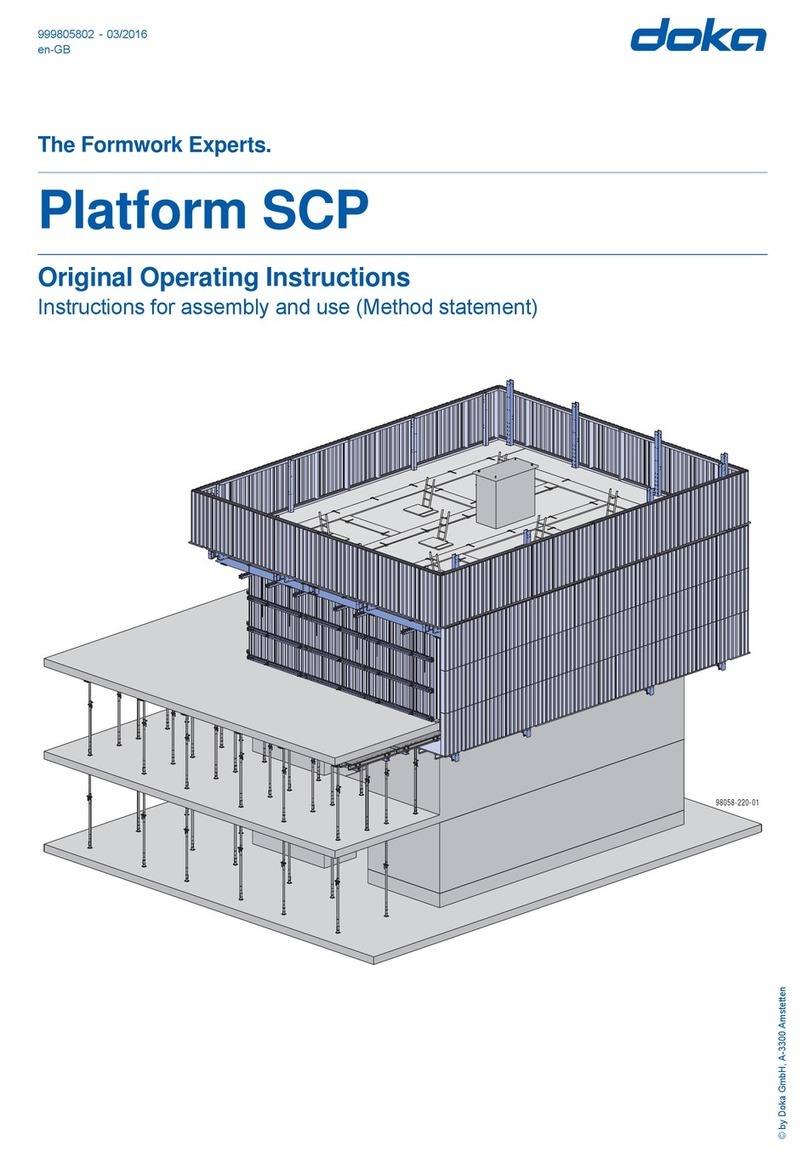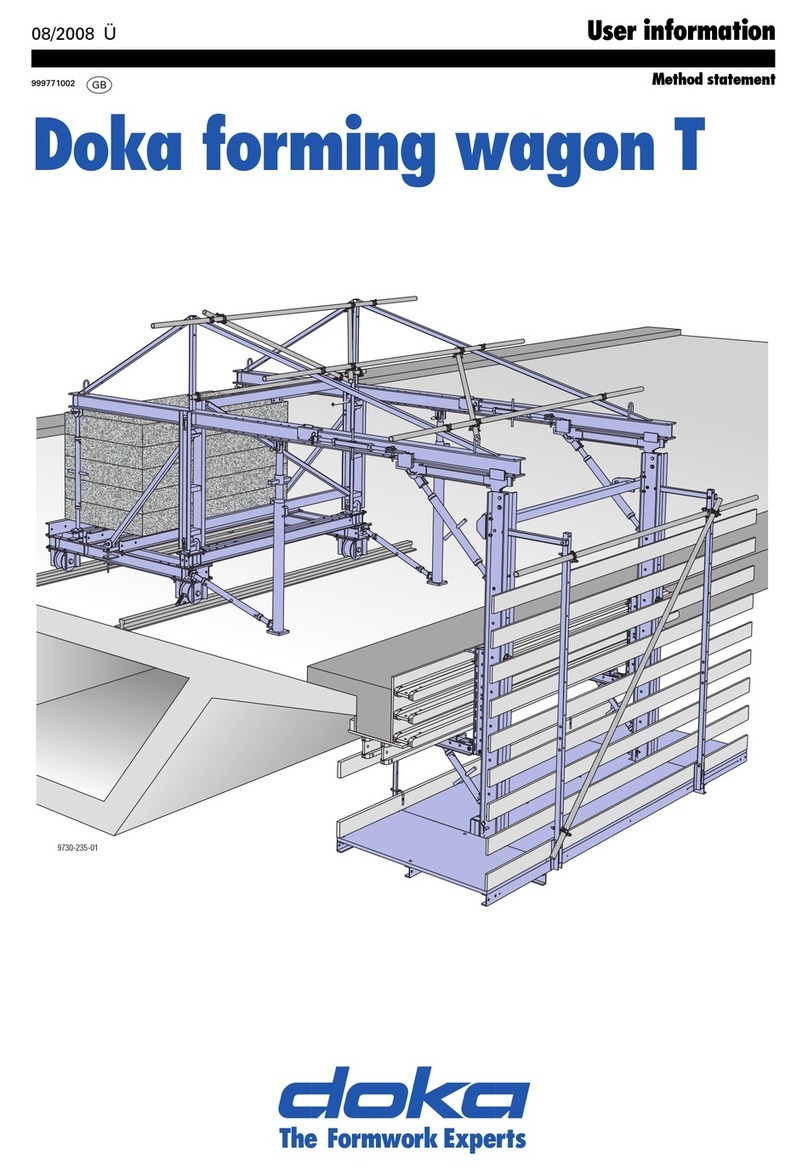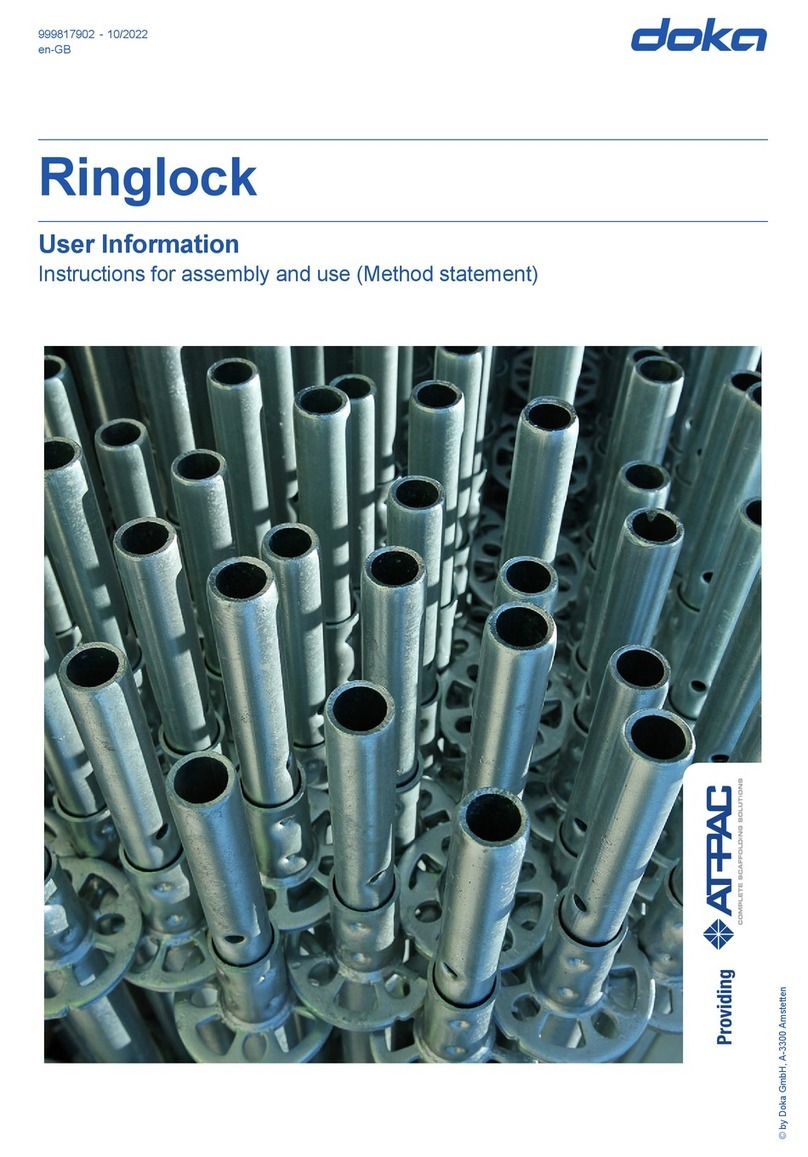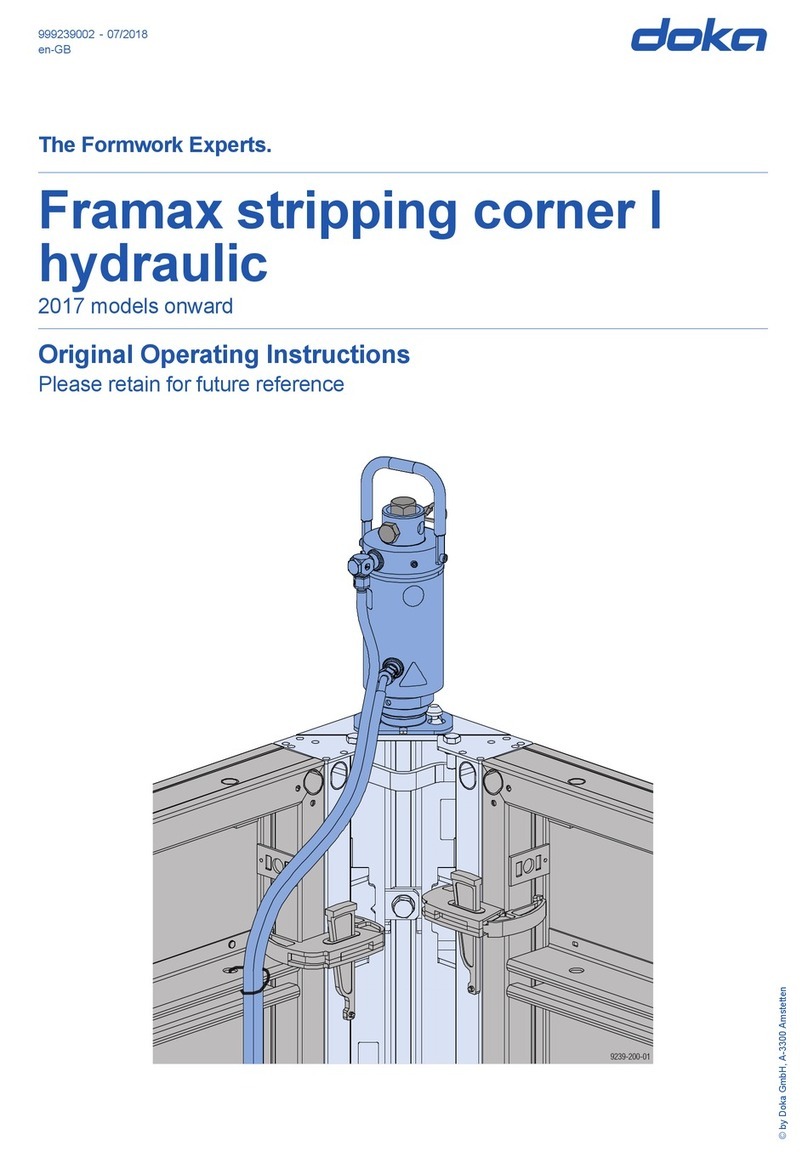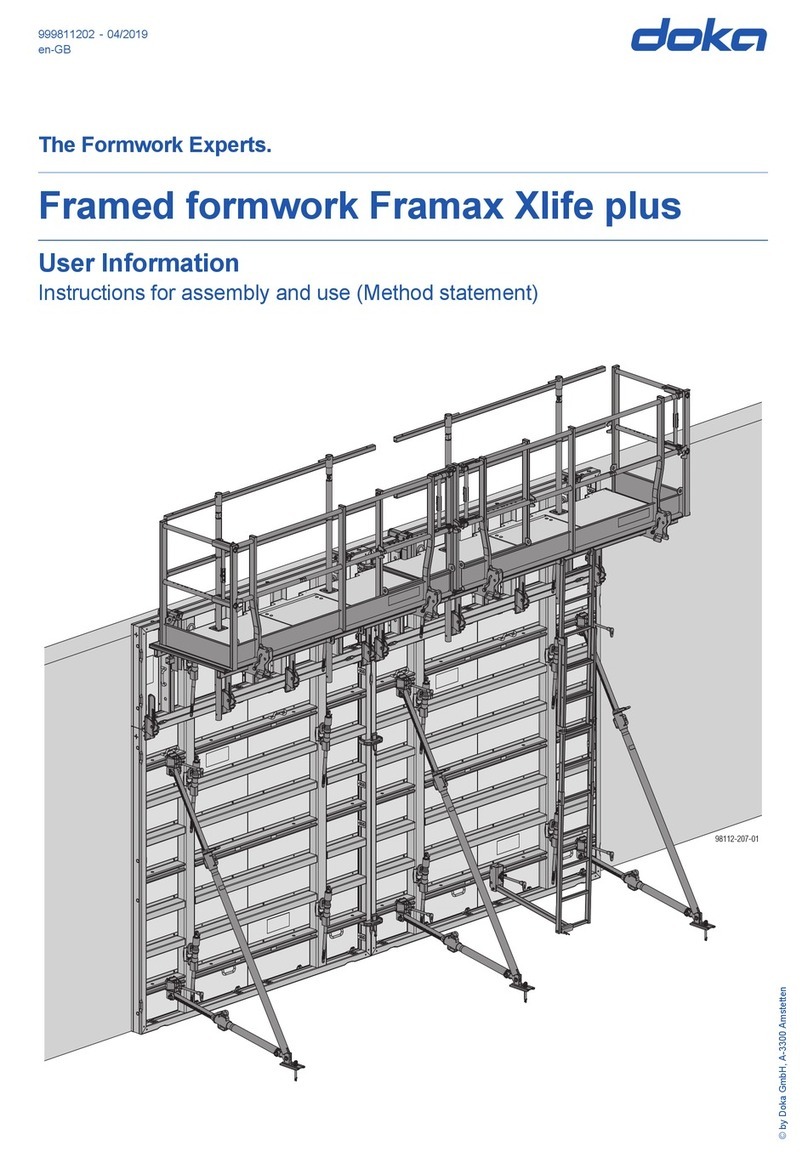
User Information Dokaflex S Introduction
5999797014 - 10/2018
Rules applying during all phases of
the assignment:
▪ The customer shall ensure that this product is
erected and dismantled, repositioned and generally
used for its intended purpose in accordance with the
applicable laws, standards and rules, under the
direction and supervision of suitably skilled persons.
These persons' mental and physical capacity shall
not in any way be impaired by alcohol, medicines or
drugs.
▪ Doka products are technical working appliances
which are intended for industrial / commercial use
only, always in accordance with the respective Doka
User Information booklets or other technical docu-
mentation authored by Doka.
▪ The stability and load-bearing capacity of all compo-
nents and units must be ensured during all phases of
the construction work!
▪ Do not step on or apply strain to cantilevers, clo-
sures, etc. until suitable measures to ensure their
stability have been correctly implemented (e.g. by
tie-backs).
▪ The functional / technical instructions, safety warn-
ings and loading data shall all be strictly observed
and complied with. Non-compliance can cause acci-
dents and severe injury (risk of fatality) and serious
damage to property.
▪ Sources of fire in the vicinity of the formwork are pro-
hibited. Heaters are permissible only when used cor-
rectly and situated a correspondingly safe distance
from the formwork.
▪ Customer must give due consideration to any and all
effects of the weather on the equipment and regards
both its use and storage (e.g. slippery surfaces, risk
of slipping, effects of the wind, etc.) and implement
appropriate precautionary measures to secure the
equipment and surrounding areas and to protect
workers.
▪ All connections must be checked at regular intervals
to ensure that they are secure and in full working
order.
In particular threaded connections and wedged con-
nections have to be checked and retightened as nec-
essary in accordance with activity on the jobsite and
especially after out-of-the-ordinary occurrences (e.g.
after a storm).
▪ It is strictly prohibited to weld or heat Doka products,
particularly parts for anchoring, suspension or con-
necting, and also cast parts, etc.
Welding radically changes the micro-structure of the
materials of which these components are made. This
leads to a drastic reduction in failure load, constitut-
ing a serious safety risk.
It is permissible to cut individual tie rods to length
with metal cutting discs (introduction of heat at the
end of the rod only), but it is important to ensure that
flying sparks do not heat and thus damage other tie
rods.
Welding work can be done only on the articles
expressly mentioned in the Doka documents as
being suitable for work of this nature.
Assembly
▪ The equipment/system must be inspected by the
customer before use, to ensure that it is in suitable
condition. Steps must be taken to rule out the use of
any components that are damaged, deformed, or
weakened due to wear, corrosion or rot.
▪ Combining our formwork systems with those of other
manufacturers could be dangerous, risking damage
to both health and property. If you intend to combine
different systems, please contact Doka for advice
first.
▪ The equipment/system must be assembled and
erected in accordance with the applicable laws,
Standards and rules by suitably skilled personnel of
the customer's, having regard to any and all required
safety inspections.
▪ It is not permitted to modify Doka products; any such
modifications constitute a safety risk.
Erecting the formwork
▪ Doka products and systems must be set up in such
a way that all loads acting upon them are safely
transferred!
Pouring
▪ Do not exceed the permitted fresh-concrete pres-
sures. Excessively high pouring rates lead to form-
work overload, cause greater deflection and risk
causing breakage.
Stripping the formwork
▪ Do not strip the formwork until the concrete has
reached sufficient strength and the person in charge
has given the order for the formwork to be stripped!
▪ When stripping the formwork, never use the crane to
break concrete cohesion. Use suitable tools such as
timber wedges, special pry-bars or system features
such as Framax S bias-cut corners.
▪ When stripping the formwork, do not endanger the
stability of any part of the structure, or of any scaf-
folding, platforms or formwork that is still in place!
